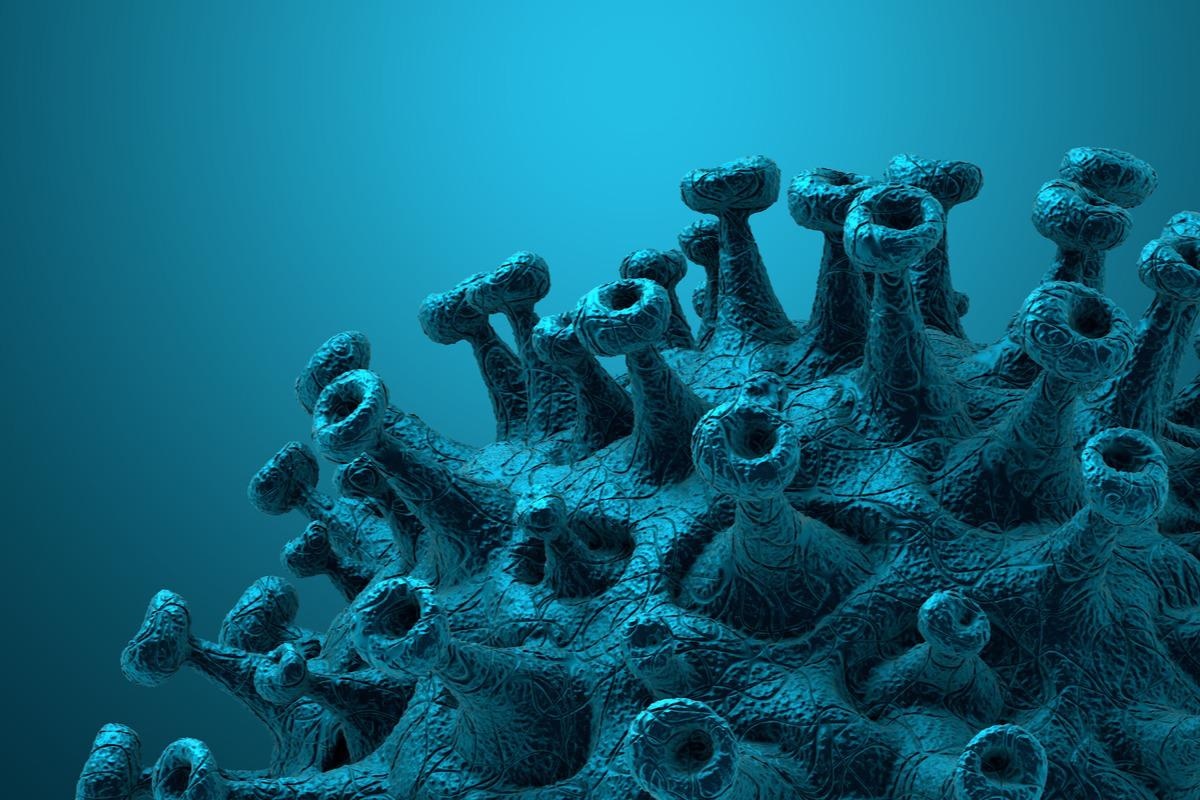Severe acute respiratory syndrome coronavirus 2 (SARS-CoV-2) is the causal agent of the ongoing coronavirus disease 2019 (COVID-19) pandemic that has claimed more than 5.6 million lives, worldwide.
This virus causes mild to severe symptoms that can cause death. Although the short-term impact of COVID-19 disease has been documented, the long-term effects of this disease are still unclear.
 Study: Immuno-proteomic profiling reveals aberrant immune cell regulation in the airways of individuals with ongoing post-COVD-19 respiratory disease. Image Credit: CROCOTHERY/Shutterstock
Study: Immuno-proteomic profiling reveals aberrant immune cell regulation in the airways of individuals with ongoing post-COVD-19 respiratory disease. Image Credit: CROCOTHERY/Shutterstock
Background
Some of the persisting COVID-19 symptoms, identified in patients who recovered from acute illness, are breathlessness, fatigue, and memory impairment. The persistence of clinical symptoms long after the recovery from SARS-CoV-2 infection has been regarded as “long COVID”.
Previous studies revealed that complex respiratory complications were retained in 18.4% of patients and 50% of recovered COVID-19 patients complained of persisting breathlessness. One of the probable reasons for prolonged respiratory complications in some SARS-CoV-2 convalescent patients is persistent parenchymal abnormalities, which cause ineffective gaseous exchanges.
Scientists have observed that radiological abnormalities may persist up to six months from hospital discharge. Hence, it is imperative to understand the molecular and cellular mechanism underlying the post-COVID-19 pulmonary syndromes.
Researchers revealed that the immunological landscape of the human respiratory tract, in patients who recovered from acute COVID-19 infection, is not well documented. In the majority of cases, individuals recovered from SARS-CoV-2 infection possess systemic immunological memory, anti-SARS-CoV-2 antibodies, and T cell responses that are detectable even after eight months post-infection. Higher immune protection has been reported in patients who recovered from acute infection.
Scientists revealed that although the number of circulating lymphocytes and monocytes decreases during severe infection, it comes back to a normal level shortly after the patient starts recovering. Similarly, the levels of inflammatory mediators, such as IL-6 and CXCL10, are found to be high in acute infection, which reduces as the individuals recuperate. These studies revealed that systemic inflammatory and immune responses are strongly linked with acute disease and it resolves with recovery.
It is not clear if the severity of inflammation during acute COVID-19 infection is linked with long COVID.
A new study
A new study, published in Immunity, investigates the association between the immune system and respiratory complications post-COVID-19 infection. Scientists evaluated the immune cells and proteomic composition of the airways and peripheral blood, in previously hospitalized, but recovered, COVID-19 patients. All patients showed prolonged radiological abnormalities in their lungs more than three months after being discharged from the hospital.
Scientists compared the airways of healthy individuals and those with long COVID. They observed that patients previously hospitalized with COVID-19 exhibited persistent proteomic and immunological abnormalities in the airways. However, such abnormalities were not found in peripheral blood, even many months after the recovery from acute infection. The authors reported that although considerable heterogeneity exists between patients, upregulation of proteins associated with epithelial damage (EGFR), ongoing cell death (CASP3), and tissue repair (TGFA) is consistently found in post-COVID-19 airways. These occurrences have been associated with the increased number of activated CD8+ T cells.
Additionally, MMP-3, which is associated with the regulation of the extracellular matrix (ECM), was found to be differentially upregulated in the post-COVID-19 airway. The increased level of LDH and albumin in the airways of long COVID patients further indicated the ongoing cell death and damage to respiratory barrier integrity. Interestingly, researchers suggest a connection between these processes and immune cell recruitment and survival (CXCL9-11, IL-7).
Severe COVID-19 infection has been characterized by a broad-spectrum upregulation of circulating proteins including IFN pathway proteins, cytotoxic proteins, chemokines, and markers of epithelial damage (EPCAM, KRT19). The current study reported that airways of individuals with long COVID exhibited a significant elevation of activated tissue-resident memory (Trm) cells CD8+ and CD4+ and an altered monocyte pool, compared to healthy individuals.
Researchers stated that the numbers of CD8+ Trm cells vary and are dependent on the proteins and extent of damage in the airways and the change within the same individual. However, CD4+ Trm cells remain relatively constant. The difference in Trm niche in post-COVID airways might be because the persistence of lung resident Trm cells is dependent on the availability of local T cells survival signals, such as IL-7 and the CXCR3. These proteins are also present in the proteomic profile of individuals with long COVID. Scientists stated that in the post-COVID-19 airway, B cells might function as aberrant tissue repair.
Main limitations
The current study has some limitations. One such limitation is associated with post-COVID-19 data of this study, which was generated based on patients undergoing bronchoscopy due to persistent respiratory abnormalities. Therefore, patients with respiratory complications, but who do not require radiological abnormalities were not considered, which could produce a biased result.
The longitudinal sampling may have affected the result. This is because the majority of the samples, which were obtained between 3-6 months post-COVID-19, showed a gradual improvement in their respiratory complications with time.
Additionally, the limited sample size withheld scientists from detecting small changes in the circulating proteins between long COVID-patients and healthy individuals.
https://news.google.com/__i/rss/rd/articles/CBMimgFodHRwczovL3d3dy5uZXdzLW1lZGljYWwubmV0L25ld3MvMjAyMjAxMjgvSW1tdW5vLXByb3Rlb21pYy1wcm9maWxpbmctc3VnZ2VzdHMtYWJlcnJhbnQtaW1tdW5lLWNlbGwtcmVndWxhdGlvbi1hc3NvY2lhdGVkLXdpdGgtcG9zdC1DT1ZELTE5LWluZmVjdGlvbi5hc3B40gEA?oc=5
2022-01-28 15:22:00Z
1266388626
Bagikan Berita Ini














0 Response to "Immuno-proteomic profiling suggests aberrant immune cell regulation associated with post-COVD-19 infection - News-Medical.Net"
Post a Comment